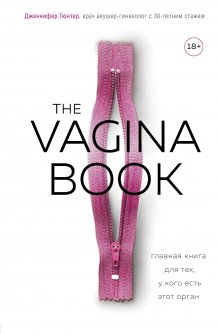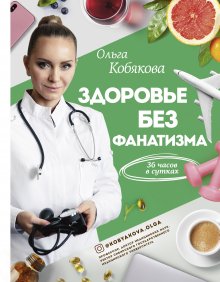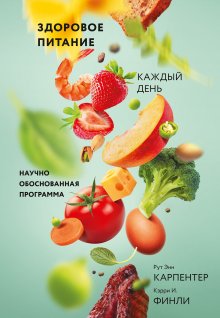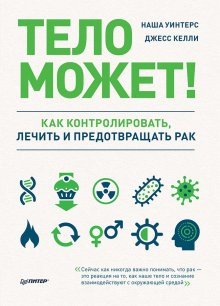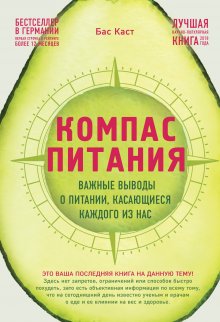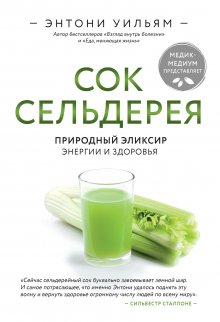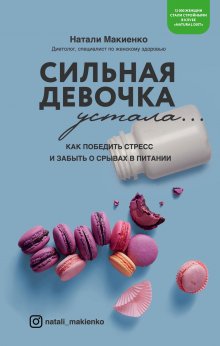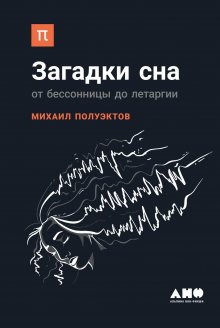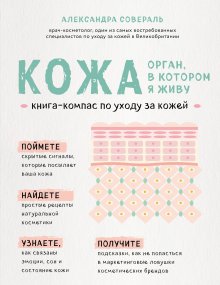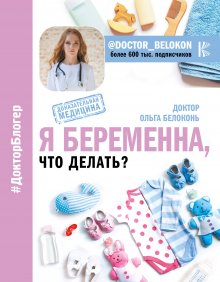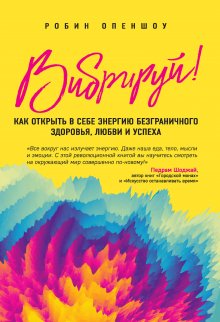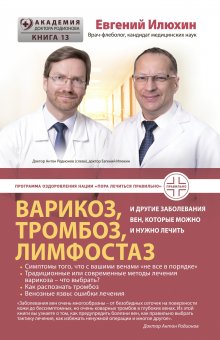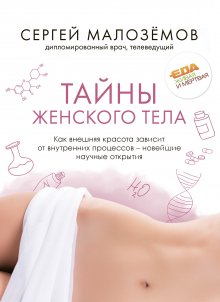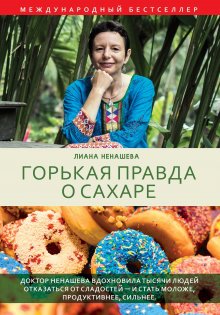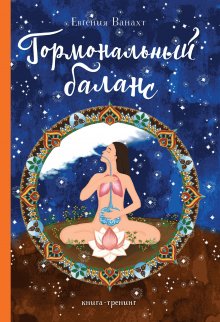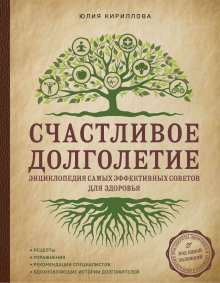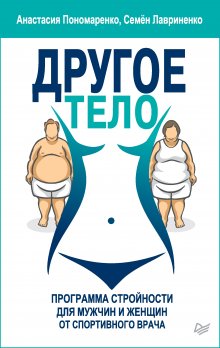Теэму Арина - Биохакинг
Скачивание начинается... Если скачивание не началось автоматически, пожалуйста нажмите на эту ссылку.
Жалоба
Напишите нам, и мы в срочном порядке примем меры.
Описание книги "Биохакинг"
Описание и краткое содержание "Биохакинг" читать бесплатно онлайн.
93
Milic, S. & Lulic, D. & Štimac, D. (2014). Non-alcoholic fatty liver disease and obesity: biochemical, metabolic and clinical presentations. World Journal of Gastroenterology 20 (28): 9330–9337.
94
Pandit, A. & Sachdeva, T. & Bafna, P. (2012). Drug-Induced Hepatotoxicity: A Review. Journal of Applied Pharmaceutical Science 02 (05): 233–243.
95
Pak, E. & Esrason, K. & Wu, V. (2004). Hepatotoxicity of herbal remedies: an emerging dilemma. Progress in Transplantation 14 (2): 91–96. Review.
96
Stahre, M. & Roeber, J. & Kanny, D. & Brewer, R. & Zhang, X. (2014). Contribution of excessive alcohol consumption to deaths and years of potential life lost in the United States. Preventing Chronic Diseases 11: E109.
97
Michalopoulos, G. (2007). Liver regeneration. Journal of Cellular Physiology 213 (2): 286–300. Review.
98
Grant, D. (1991). Detoxification pathways in the liver. Journal of Inherited Metabolic Disease 14 (4): 421–430. Review.
99
Ellis, H. (2011). Anatomy of the gallbladder and bile ducts. Surgery (Orford) 29 (12): 593–596.
100
Schmidt, D. et al. (2010). Regulation of bile acid synthesis by fat-soluble vitamins A and D. The Journal of Biological Chemistry 285 (19): 14486–14494.
101
Houten, S. & Watanabe, M. & Auwerx, J. (2006). Endocrine functions of bile acids. The EMBO Journal 25 (7): 1419–1425. Review.
102
Ikemoto, S. et al. (1997). Cholate inhibits high-fat diet-induced hyperglycemia and obesity with acyl-CoA synthetase mRNA decrease. American Journal of Physiology 273 (1 Pt 1): E37–45.
103
Hofmann, A. (1999). The continuing importance of bile acids in liver and intestinal disease. Archives of Internal Medicine 159 (22): 2647–2658. Review.
104
Для профилактики камнеообразования в медицине используют препараты урсодезоксихолевой кислоты. – Прим. науч. ред.
105
Walcher, T. et al. (2009). Vitamin C supplement use may protect against gallstones: an observational study on a randomly selected population. BMC Gastroenterology 9: 74.
106
Koppisetti, S. et al. (2008). Reactive oxygen species and the hypomotility of the gall bladder as targets for the treatment of gallstones with melatonin: a review. Digestive Diseases and Sciences 53 (10): 2592–2603.
107
National Institutes of Health. (2012). Human Microbiome Project defines normal bacterial makeup of the body. Bethesda: National Human Genome Research Institute. [date of reference: 26.8.2014]
108
Ley, R. & Peterson, D. & Gordon, J. (2006). Ecological and evolutionary forces shaping microbial diversity in the human intestine. Cell 124 (4): 837–848. Review.
109
Guarner, F. & Malagelada, J. (2003). Gut flora in health and disease. The Lancet 361 (9356): 512–519. Review.
110
Sonomoto, K. & Yokota, A. (2011). Lactic Acid Bacteria and Bifidobacteria. Current Progress in Advanced Research. Norfolk: Caister Academic Press.
111
Wong, J. & de Souza, R. & Kendall, C. & Emam, A. & Jenkins, D. (2006). Colonic health: fermentation and short chain fatty acids. Journal of Clinical Gastroenterology 40 (3): 235–243. Review.
112
Guarner, F. & Malagelada, J. (2003). Gut flora in health and disease. The Lancet 361 (9356): 512–519. Review.
113
Jernberg, C. & Löfmark, S. & Edlund, C. & Jansson, J. (2010). Long-term impacts of antibiotic exposure on the human intestinal microbiota. Microbiology 156 (Pt 11): 3216–3223.
114
Beaugerie, L. & Petit, J. (2004). Microbial-gut interactions in health and disease. Antibiotic-associated diarrhoea. Best Practice and Research Clinical Gastroenterology 18 (2): 337–352. Review.
115
Thomas, C. & Stevenson, M. & Williamson, D. & Riley, T. (2002). Clostridium difficile-associated diarrhea: epidemiological data from Western Australia associated with a modified antibiotic policy. Clinical Infectious Diseases 35 (12): 1457–1462.
116
Dethlefsen, L. & Huse, S. & Sogin, M. & Relman, D. (2008). The pervasive effects of an antibiotic on the human gut microbiota, as revealed by deep 16S rRNA sequencing. PLoS Biology 6 (11): e280.
117
World Health Organization. (2014). WHO’s first global report on antibiotic resistance reveals serious, worldwide threat to public health. Geneva: WHO. [date of reference: 26.8.2014]
118
Forsythe, P. & Kunze, W. (2013). Voices from within: gut microbes and the CNS. Cellular and Molecular Life Sciences 70 (1): 55–69. Review.
119
Cryan, J. & Dinan, T. (2012). Mind-altering microorganisms: the impact of the gut microbiota on brain and behaviour. Nature Reviews Neuroscience 13 (10): 701–712. Review.
120
Cryan, J & O’Mahony, S. (2011). The microbiome-gut-brain axis: from bowel to behavior. Neurogastroenterology and Motility 23 (3): 187–192.
121
Grenham, S. & Clarke, G. & Cryan, J. & Dinan, T. (2011). Brain-gut-microbe communication in health and disease. Frontiers in Physiology 2: 94.
122
Foster, J. & McVey Neufeld, K. (2013). Gut-brain axis: how the microbiome influences anxiety and depression. Trends in Neurosciences 36 (5): 305–312. Review.
123
Roberts, R. & Farmer, C. & Walker, C. (2018). The human brain microbiome; there are bacteria in our brains!. Program No. 594.08. Neuroscience Meeting Planner. San Diego, CA: Society for Neuroscience, 2018. Online.
124
Mayer, E. (2011). Gut feelings: the emerging biology of gut-brain communication. Nature Revies Neuroscience 12 (8): 453–466. Review.
125
Welgan, P. & Meshkinpour, H. & Beeler, M. (1988). Effect of anger on colon motor and myoelectric activity in irritable bowel syndrome. Gastroenterology 94 (5 Pt 1): 1150–1156.
126
Travagli, R. & Hermann, G. & Browning, K. & Rogers, R. (2006). Brainstem circuits regulating gastric function. Annual Review of Physiology 68: 279–305. Review.
127
Mayer, E. (2000). The neurobiology of stress and gastrointestinal disease. Gut 47: 861–869.
128
Hughes, D. & Sperandio, V. (2008). Inter-kingdom signalling: communication between bacteria and their hosts. Nature Reviews Microbiology 6: 111–120.
129
Fasano, A. (2012). Leaky gut and autoimmune diseases. Clinical Reviews in Allergy and Immunology 42 (1): 71–78.
130
Hollander, D. (1999). Intestinal permeability, leaky gut, and intestinal disorders. Current Gastroenterology Reports 1 (5): 410–416. Review.
131
Hietbrink, F. (2009). Systemic inflammation increases intestinal permeability during experimental human endotoxemia. Shock 32 (4): 374–378.
132
Frazier, T. & DiBaise, J. & McClain, C. (2011). Gut microbiota, intestinal permeability, obesity-induced inflammation, and liver injury. Journal of Parentereral and Enteral Nutrition 35 (5 Suppl): 14S–20S.
133
Neurath, M. (2014). Cytokines in inflammatory bowel disease. Nature Reviews Immunology 14: 329–342.
134
Aloisi, F. (2001) Immune function of microglia. Glia 36 (2): 165–179. Review.
135
Foster, J. & McVey Neufeld, K. (2013). Gut-brain axis: how the microbiome influences anxiety and depression. Trends in Neuroscience 36 (5): 305–312. Review.
136
Love, B. et al. (2013). Antibiotic exposure and risk of food allergy in children. 2013 Annual Meeting of the American Academy of Allergy, Asthma and Immunology. [date of reference: 20.9.2014]
137
Vadas, P. & Wai, Y. & Burks, W. & Perelman, B. (2001). Detection of peanut allergens in breast milk of lactating women. The Journal of the Ameican Medical Association 285 (13): 1746–1748.
138
Kosecka, U. & Berin, M. & Perdue, M. (1999). Pertussis adjuvant prolongs intestinal hypersensitivity. International Archives of Allergy and Immunology 119 (3): 205–211.
139
Nakayama, T. & Aizawa, C. & Kuno-Sakai, H. (1999). A clinical analysis of gelatin allergy and determination of its causal relationship to the previous administration of gelatin-containing acellular pertussis accine combined with diphtheria and tetanus toxoids. The Journal of Allergy and Clinical Immunology 103 (2 Pt 1): 321–325.
140
O’Hagan, D. (2000). Vaccine Adjuvants. Preparation Methods and Research Protocols. Methods in Molecular Medicine. New York: Humana Press. [date of reference: 20.9.2014]
141
Jerschow, E. et al. (2012). Dichlorophenol-containing pesticides and allergies: results from the US National Health and Nutrition Examination Survey 2005–2006. Annals of Allergy Asthma and Immunology 109 (6): 420–425.
142
Ortolani, C. & Pastorello, E. (2006). Food allergies and food intolerances. Best Practice & Research. Clinical Gastroenterology 20 (3): 467–83. Review.
143
David, T. (2000). Adverse reactions and intolerance to foods. British Medical Bulletin 56 (1): 34–50.
144
Cardinale, F. et al. (2008). Intolerance to food additives: an update. Minerva Pediatrica 60 (6): 1401–1409. Review.
145
Weidenhiller, M. et al. (2012). Histamine intolerance syndrome (HIS): plethora of physiological, pathophysiological and toxic mechanisms and their differentiation. Zeitschrift für Gastroenterolie 50 (12): 1302–1309.
146
Maintz, L. & Novak, N. (2007). Histamine and histaminen intolerance. The American Journal of Clinical Nutrition 8 (5): 1185–1196.
147
David, T. (2000). Adverse reactions and intolerance to foods. British Medical Bulletin 56 (1): 34–50.
Подписывайтесь на наши страницы в социальных сетях.
Будьте в курсе последних книжных новинок, комментируйте, обсуждайте. Мы ждём Вас!
Похожие книги на "Биохакинг"
Книги похожие на "Биохакинг" читать онлайн или скачать бесплатно полные версии.
Мы рекомендуем Вам зарегистрироваться либо войти на сайт под своим именем.
Отзывы о "Теэму Арина - Биохакинг"
Отзывы читателей о книге "Биохакинг", комментарии и мнения людей о произведении.





